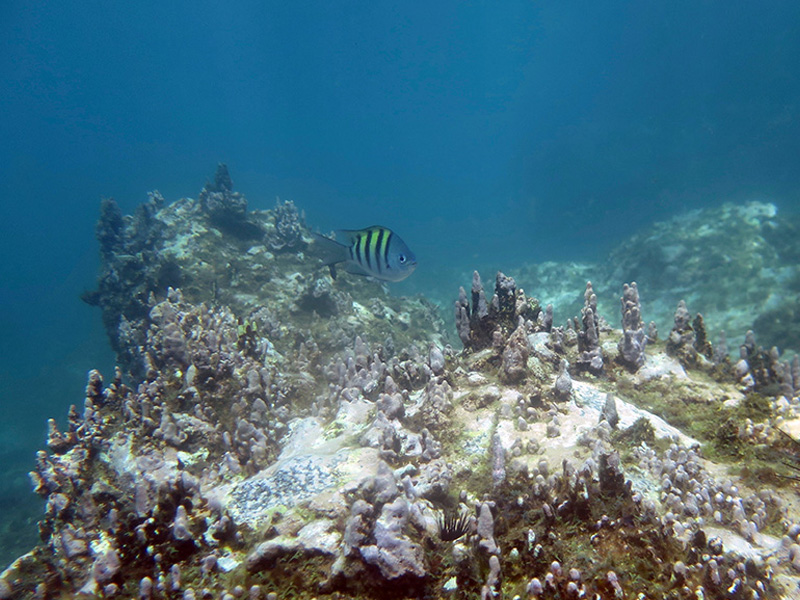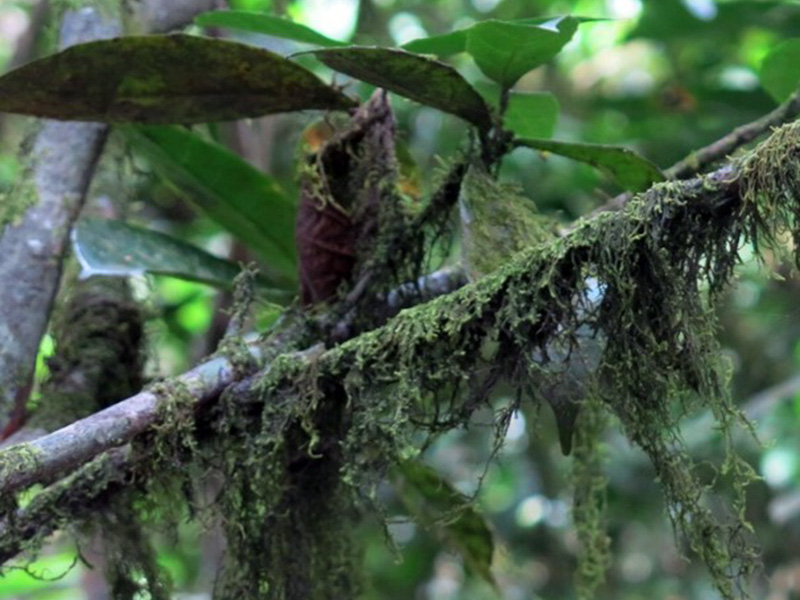Context: Rhodolith or maerl beds are plains of calcareous or coralline red algae, locally called ‘glagla’. Coralline algae capture carbon dissolved in water and trap it in their cellular walls as calcium carbonate, giving it their characteristically rigid nodular shape. Unlike coral, rhodoliths do not attach to the rocky seabed. Rather, they roll along the seafloor until they become too large to be mobilised by waves and currents. Rhodolith beds occurs from polar to tropical regions in subtidal zones up to 30m depth. Just like kelp beds, seagrass meadows, and coralline algal reefs these are macrophyte-dominated benthic communities, being the most common one found in Príncipe. As three-dimensional biogenic structures rhodolits are widely recognized as bioengineers that provide structural complexity and relatively stable microhabitats for a wide range of organisms, resulting in increased biodiversity and benthic primary productivity. Rhodoliths have been described as nursery areas for fish, shellfish and biodiversity hotspots, and also important carbon storage sites.
Rhodolith beds are extremely sensitive and barely have the capacity to regenerate after disturbance. This is due to the tremendous longevity of the algae that form them, their low reproductive rate and slow growth (only 1 mm per year). Both dead and live rhodolith can occur in the seabeds, of which some are estimated to be 5500 years old, making them also suitable paleo-environmental indicators. Due to their low resilience rhodoliths are considered a non-renewable resource, very fragile and easily affected by local human impacts, such as eutrophication, dredging, and towed demersal fishing but also by global warming and acidification.
Up to date, there is almost no information on the presence and the extent of possible rhodolith beds in West Africa nor on their abiotic and biotic traits. Multiple rhodolith beds or glagla exist around Príncipe (Mosteiros, Bahia das Agulhas, Bone de Jocquei and Pedra da Gale), ranging from depths of 5m up to 30m. Diving confirmed high levels of associated biodiversity (bryozoans, sponges, algae, corals, barnacles, polychaeta, echinoderms, and many fish, including the elusive West African seahorse). Rhodolith’s unique features, important ecosystem functions, but also vulnerability makes this habitat a clear conservation priority.
Aim: Assess the ecological importance of Principe’s rhodolith beds.
Methods: Determine and map the extent of 2 or 3 rhodolith beds. Assessment of abiotic factors across a year (temperature, salinity, water movement, underlying and surrounding sediment, turbidity, pH, depth). Rhodolith characterisation (species, composition, shape, size, thickness, ratio live/dead rhodolith,…). Identification and inventory of associated biodiversity. Ecosystem services and disturbance assessment.
Expected output:
- Abiotic and biotic characterization of 2 – 3 rhodolith beds, as well as maps of their full extent
- Understanding of ecological functions of rhodolith, current disturbances, conservation measures
Collaboration:
- Francisco Jose Otero Ferrer otero@fpct.ulpgc.es, Marcial marcialcosmedesteban@gmail.com University of Las Palmas (mapping of maerl beds during October 2016 marine expedition BioPríncipe)
- Identify a leading research group on tropical maerl beds (Smithsonian Institution, Plymouth University,..).



